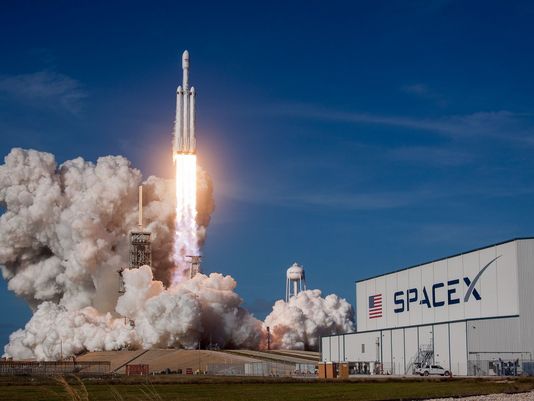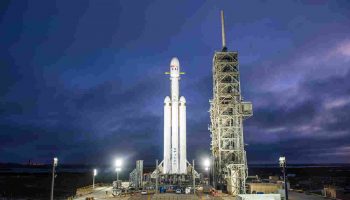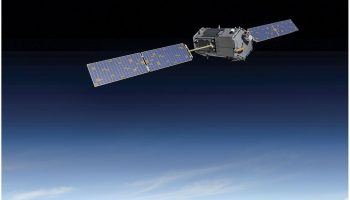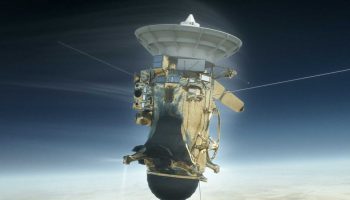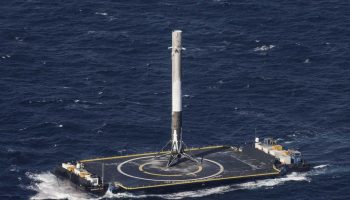How is SpaceX’s Falcon Heavy, the most powerful rocket in the world, and why is launching from Cape Canaveral so important?
It took off from the same platform in Florida that took the men to the Moon. And it marked a new chapter on the road to a manned mission to Mars.
The gigantic rocket Falcon Heavy, of the private company SpaceX, left this Tuesday at 20:45 GMT from NASA’s John F. Kennedy Space Center in Cape Canaveral. And he did it by taking a Tesla car, the first car to be launched into space. The Falcon Heavy took off from the LC-39A platform of the Kennedy Center, the same one from which the Apollo missions departed.
The launch of the rocket is one of the most anticipated events since the missions that brought man to the Moon. A crowd flocked to Cape Canaveral to witness the takeoff. Both SpaceX and Tesla are led by technology billionaire and entrepreneur Elon Musk, who hopes to use rockets like Falcon Heavy in future missions to Mars.
This spacecraft was built mainly from three Falcon 9 rockets, also from Space X, to power the capsule in which the Tesla was installed. As with its launches, SpaceX hoped to recover the three accelerating rockets. Less than three minutes after takeoff, two of these returned to the Florida coast, just south of the Kennedy Space Center. Their landing legs made contact with the ground at almost the same time.
The third accelerator was to return to an unmanned ship in the Atlantic Ocean, several hundred miles from Florida. But it did not have enough fuel to decelerate during the descent and was destroyed when it hit the water at about 500 kilometers per hour.
Musk believes that the recovery and reuse of the rockets are what will change the game rules of the space industry.
“The game will be over for all the other heavy-load rockets,” he told reporters. “It will be like trying to sell an airplane in a market in which one airline has a reusable airplane and all the others have single-use planes, which once they reach their destination, randomly crash somewhere”, he pointed.
Auto in orbit
After the return of the accelerating rockets, the upper capsule of the Falcon Heavy, with the Tesla, began its trajectory towards the orbit of Mars. For it to be routed to its destination, the engine of the upper stage had to ignite three times.
This is the ship with which Space X wants us to travel to Mars to establish a human colony. Musk warned before the flight that this was one of the phases that worried him most, because of the possibility that it did not work correctly.
The upper stage of the Falcon had to traverse a concentrated region of radiation on Earth, known as “Van Allen belts,” and this could interfere with electronic systems. The rocket, 70 meters high, you can place in orbit a load of up to 64 tons, the equivalent of putting in space five double-decker buses. Its capacity is only surpassed by the Saturn V aircraft, which operated in the Apollo missions in the decade of the 60s and 70s.
The Falcon Heavy rocket has twice the capacity of the rest of those used today. But the triple structure required modifications in the design and a strengthening of the main propeller.
The 27 Merlin engines at the base of the rocket can generate a power of 23,000 kilo-newtons, more than double the most powerful currently in use, the Delta IV Heavy, operated by the United Launch Alliance, one of the main competitors of SpaceX.
Musk said the challenges of developing the rocket made the chances of the launch successful only 50-50. “I had the image of a giant explosion on the platform, a wheel bouncing on the road, but fortunately, it did not happen,” the Space X CEO told reporters after the event. With an undoubted advertising calculation, the Falcon Heavy took as test load a red Tesla car in which a dummy with a space suit was placed at the wheel.
The Tesla radio played a David Bowie Space Oddity song as the vehicle left Earth. If everything goes according to plan, the Tesla will be dispatched in an elliptical orbit around the Sun that will serve to reach Mars.
“The car will reach an orbit that is 400 million km from Earth and will travel to its destination at a speed of 11 km per second,” Musk told reporters. “And we estimate that the Tesla will continue in that orbit for hundreds of millions of years.”
Satellites and telescopes
It is unlikely that the Falcon Heavy arrives to transport its maximum load, due to the large amounts of fuel that would be necessary.
THE FALCON HEAVY
- Could place in orbit much larger satellites for military or intelligence use
- Could launch a large number of smaller satellites simultaneously, such as the “constellation of thousands of satellites” proposed by Elon Musk to provide broadband to the entire planet
- It will allow sending large robots to the surface of Mars, or visiting distant planets of the Solar System such as Jupiter and Saturn and their moons
- It will also be able to place large telescopes in orbit as Hubble’s successor, the James Webb telescope, which due to current restrictions will be folded like an origami sheet for its launch in 2019
- The new Falcon Heavy rocket has already been hired to launch large geostationary satellites.
The main clients of Falcon Heavy “will possibly be the government and the Department of Defense of the United States, SpaceX is already a recognized supplier of the Department of Defense for classified and unclassified missions,” Rachel Villain, of the space consultancy Euroconsult, told.
The Falcon Heavy presents a challenge to the US government. NASA is developing its own super-rocket called Space Launch System or SLS. It is estimated that each flight of the SLS will cost about US $ 1,000 million. According to Musk, the cost of each Falcon Heavy flight is about US $ 90 million and some critics are already questioning how Congress can justify SLS spending when there is a much cheaper alternative.
Musk is not the only entrepreneur who wants to compete with NASA. Jeff Bezos, the founder of Amazon, is developing a rocket called New Glenn that will be able to place in orbit loads of up to 45 tons. And he said he plans an even more powerful version called New Armstrong. For SpaceX the launch of Falcon Heavy is part of a much more extensive program to send a crew to Mars in the future. Musk is already developing a future rocket called BFR, which will have no less than 31 engines.

